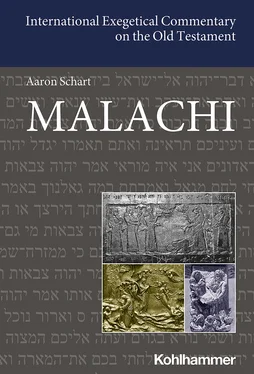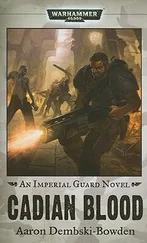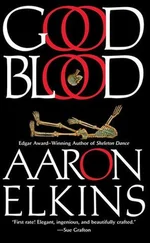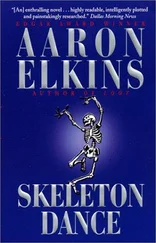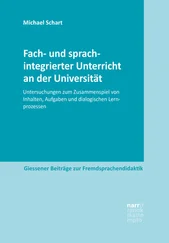Although the prophet lays claim to Yhwh’s authority for his presentation of the results of the disputation, we may suppose that, even so, not all of the prophet’s opponents would have accepted the prophet’s opinion. The very fact that it appeared necessary to describe the disputation and thus to supply readers with divinely-legitimated strategies for argumentation against particular counterquestions favors the supposition that, despite their refutation by the prophet, those opposing questions had not been silenced but had even become more virulent. Since the prophet occasionally argues in terms of the future (e.g., Mal 3:5; 3:19 [4:1 ET]), it seems that the content of such arguments is still a matter for debate, something to be settled in the future. Hence the description of the disputation also serves the purpose of assigning to God’s future action the answer to the question of which party to the disputation is right. The unfulfilled nature of future hopes has been further emphasized by the redaction’s insertion of clear references to the “day of Yhwh” (e.g., Mal 3:23 [4:5 ET]). The community that transmitted the Malachi document lived in this condition, between present controversy and a longing for affirmation.
The pattern of the disputation sequence Within the Malachi document the disputation sequences follow a pattern that is not found elsewhere and therefore should be regarded as the creative achievement of the author. 13
Thesis The disputation sequence begins with a thesis, thus formulating the starting point. Formally, this is either a divine self-proclamation (1:2; 1:6; 3:6; 3:13) or a prophetic speech (2:10; 2:17).
Quotation of the counter-position In a second step the prophet describes the opponents’ position. This takes the form of a counterquestion; the prophet introduces it with “but you have said …” in the form of a quotation. 14The counterquestions are directed to Yhwh when the thesis was formulated as divine speech. If, on the other hand, it took the form of prophetic speech the opponents’ answer is directed to the prophet. 15It is repeatedly made clear that the prophet is not quoting the opponents in their original words but instead lets his own evaluation enter into his formulation of the opponents’ words, for example by polemically distorting their position.
Refutation of the opponents’ position A third step produces a refutation of the counterquestion by means of a stacking of “arguments.” In this, the “disputation speech” proper, the prophet exhibits everything that could bring the opponents to insight: reproaches, references to the Torah and other traditional norms, examples and references to Yhwh’s future intervention. Once the prophet has presented his “arguments” the matter has been clarified in the name of Yhwh.
The Speaker The Malachi document produces the impression that all six disputation speeches are uttered by the same speaker, though on different occasions. The speaker’s words are, obviously, spoken in the name of Yhwh, a fact that is certified by the generic designation of the superscription, “word of Yhwh” (Mal 1:1, the use of the prophetic messenger formula, “thus says Yhwh” (Mal 1:4, and the formulae “says Yhwh of hosts” (20x) and “says Yhwh” (Mal 1:2bα; 3:13a).
Although in general the prophet relates to his conversation partners as one who speaks for Yhwh, there are three passages in which the prophet associates himself with the addressees as “we”: Mal 1:9a; 2:10; 2:17. 16
The Addressees The superscription of the Malachi document suggests the idea that the prophet addresses all six disputation speeches “to Israel,” but in the text the hearers are, in part, more closely defined. In Mal 1:2, they are associated with Jacob and separated from Edom; in Mal 1:6b and 2:1 the hearers are addressed as “priests”; and in Mal 3:6 as “children” [lit. ‘sons’] of Jacob.” We may conclude from this that at least two different groups are addressed: on the one hand laypeople who identify with Jacob, and priests on the other hand. It is possible, though, that the words addressed to the laity are also intended for various groups. In particular, Mal 2:17 and 3:5 seem to address the victims of various forms of oppression, and Mal 3:13–21 [3:13–4:3 ET] is addressed to those who revere (or fear) Yhwh.
Authority of Scripture In his basic premise, the prophet offers a logical argumentation. But he mixes it with polemically biased “quotations” from the opponents, accuses them of having inferior motivations, and claims to have knowledge of the future consequences of an incriminated attitude. He frequently makes use of quotations and allusions to other writings that, to him, represent authority. These may also serve the purpose of achieving mutual understanding with the opponents: if the prophet can derive his position from authoritative texts his opponents may be more inclined to agree with him.
The search for texts the prophet presupposes has intensified in recent decades. 17In the process it has become clearer and clearer that, for the prophet, the Torah—that is, the collections of laws, including later parts of the Holiness Code—was normative. However, narrative materials such as the story of Jacob and Esau were also used. Besides these, the prophet adopts ideas from his prophetic predecessors. In Mal 3:23 [4:5 ET] the “prophet Elijah” is even referred to by name.
There is no argument about the structure of the Malachi document. It contains six disputation sequences plus a superscription and a concluding admonition attached to a prediction about the future. The superscription is in 1:1; the disputation sequences are in 1:2–5; 1:6–2:9; 2:10–16; 2:17–3:5; 3:6–12; 3:13–21 [3:13–4:3 ET]; the conclusion is in 3:22–24 [4:4–6 ET].
The disputation sequences are self-contained arguments. They neither build on any preceding saying nor demand continuation through what follows. At the same time there are linkages, and it is probable that the six sayings were, from the very beginning, embedded in a meaningful structure. There are overlaps in content between various sayings, keyword links, and analogous structures.
The very first saying (Mal 1:2–5) establishes the theme of the fundamental relationship to God that shapes everything to follow, and does so through Yhwh’s declaration of love for the “you-group” identified with the patriarch Jacob. The second saying (Mal 1:6–2:9) is evidently concerned with the cult centered on the representative forms for Yhwh’s כבוד: “honor, glory” and שׁם. The third saying (Mal 2:10–16) focuses on interpersonal relationships within the family. The fourth saying (Mal 2:17–3:5) refers to interpersonal misbehavior outside the family (Mal 3:5). In the fifth saying (Mal 3:6–12), the subject is the agricultural yield, while the sixth (Mal 3:13–21 [3:13–4:3 ET]) is about just punishment for the wicked and reward for those who revere Yhwh. The order roughly follows that of the structure underlying the Decalogue: God—cult—family—community—possessions; in the Decalogue the idea of the God who punishes and rewards (sixth saying) is treated within the second commandment (Exod 20:5–6).
The disputation speeches contain some twenty-six “arguments.” These differ sharply in formal and semantic aspects and are often brought together in ways that create strong tensions. It is improbable, therefore, that they all stem from the same author. 18The later additions acknowledged by most commentators include Mal 1:1, 1:11–14, 3:1b–4, and 3:22–24 [4:4–6 ET], but in fact we should reckon with substantially more editing. 19Here I will briefly summarize the hypothesis of the work’s redaction history worked out in this commentary. Before the Malachi document was incorporated into the Book of the Twelve Prophets, it existed as an independent document. Over the course of its reworking to make it part of the Book of the Twelve, some additions were inserted into the Malachi document to interlock it within the whole. Good examples are the appeal to repentance in Mal 3:7, probably stemming from the same hand as the almost identical call to repentance in Zech 1:3 and the quotation from Joel 3:4b in Mal 3:23b.
Читать дальше
